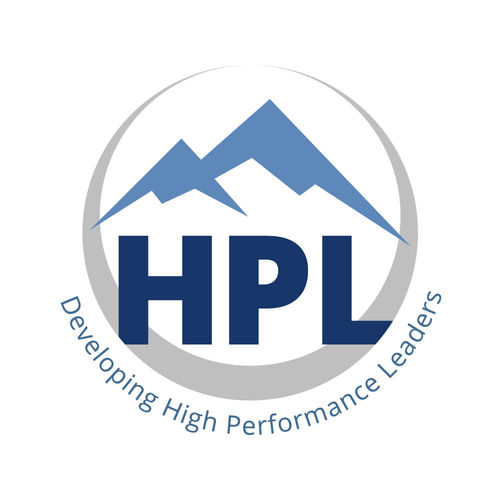
|
|
||
|
The misconception that Lean principles are exclusive to manufacturing or production environments is a significant oversight. I first learned about Lean thinking while working at Toyota in 2001. From then on, Lean has been a part of my life professionally and personally. Lean thinking went with me and contributed to my success at BlackBerry. It greatly challenged my thinking when I continued as the leader of the Canadian operations at Amazon. As someone deeply immersed in Lean methodologies within my business today and throughout my career, I've witnessed firsthand the transformative power of Lean thinking on and beyond the factory floor.
Initially conceived by Toyota to optimize production processes, Lean management principles have transcended their origins and found success across a spectrum of industries. This adaptability is a testament to the fundamental effectiveness of Lean methodologies in driving operational excellence and fostering continuous improvement.
It's crucial to recognize that Lean isn't bound by industry constraints; rather, its core tenets of efficiency, waste reduction, and customer-centricity can be applied to any organizational context. By embracing Lean practices, businesses in service-oriented sectors such as healthcare, finance, and hospitality can unlock untapped potential for enhancing efficiency and elevating customer satisfaction.
In essence, the application of Lean thinking in service industries isn't just a possibility; it's a strategic imperative. By delving into how Lean methodologies can streamline processes, minimize waste, and optimize resource utilization, we can unearth opportunities for significant improvements across diverse sectors. So, let's take a deeper look into how Lean principles can revolutionize service-oriented industries and pave the way for unparalleled success and growth.
Understanding Lean Thinking in Services
Lean thinking is rooted in the concept of continuous improvement and the elimination of waste. While manufacturing environments traditionally embraced these principles, service industries are increasingly recognizing the value of Lean thinking in streamlining their operations. In service-oriented sectors such as healthcare, finance, and hospitality, Lean principles can be tailored to address the unique challenges and opportunities present.
To begin with, we must first think of processes. Every job has a process, and that is where we can start implementing lean. When jobs have repeating tasks in a specific order, we can view them as a one-directional flow of productivity.
For example, when you consider a hairdresser, you might think there is no way that lean thinking can improve the process of something so creative and variable. But when you break down the tasks a hairstylist goes through, you begin to see the same process unfold: The client walks in, sits in the chair, and describes what they want to be done. The stylist washes, trims/colours the hair, and styles it, and the customer pays and leaves.
When you view each part of the process through a lean lens, the elements will become clear, and you will know which steps improve overall customer satisfaction. Perhaps tools are much farther away than they need to be, maybe the colour station (where hair dies are mixed) is in the back of the building, and the stylist has to walk back and forth multiple times during the appointment to mix colours. Is there a way to standardize popular colour combinations? Is there a standard order of tasks based on specific needs, such as a haircut vs. highlights?
Lean can be applied anywhere; it just changes how it is achieved. Next, I'd like to offer some case studies that highlight how specific elements of Lean can be applied to other service industry needs. Value Stream Mapping in Service Delivery
We have all been there! You go to the doctor's office for your regular check-up. You arrive on time. There is no one else in the waiting room, and then you sit... for an hour.. waiting to go to the examination room. Then once you finally reach the examination room, you sit and wait for twenty minutes for the nurse to come in and ask you all the required questions so that you can sit and wait for ANOTHER fifteen minutes for the doctor to finally come in and tell you everything looks good and see you in a year. What if Doctors' offices and hospitals utilized value stream mapping to improve service delivery?
One key aspect of Lean thinking is the application of value stream mapping to visualize and analyze the flow of processes. In service industries, understanding the entire value stream is crucial for identifying areas of improvement. For instance, a healthcare provider may use value stream mapping to optimize the patient journey from appointment scheduling to post-treatment follow-up. By eliminating unnecessary steps and bottlenecks, organizations can enhance the overall efficiency of service delivery.
Kaizen in Customer Service: A Continuous Improvement Approach
Kaizen is an incredible tool for any process. All jobs involve some element of the process. There will always be specific tasks that you have to do daily, weekly, monthly, and yearly. While some tasks may be more repetitive than others in certain industries, there are always processes to work with to implement lean thinking.
Think about a restaurant: Every new guest starts the same process: Greet guest(s) at the door and take them to their table. Provide a menu and drink/food recommendations. Take their order, deliver it, and then provide any additional top-ups or requests. Clear dishes as necessary until the bill is provided. Clean the table... Repeat.
What if Kaizen was introduced to this restaurant process? By consistently employing Kaizen methodologies, the restaurant examines and refines elements such as menu efficiency, order processing times, and guest satisfaction procedures. Something as simple as keeping condiments on the table instead of requiring servers to supply condiments on request can save a lot of wasted time and motion of the serving staff and increase customer satisfaction and impression of the meal. Through the implementation of incremental adjustments, the establishment can realize substantial progress in both customer contentment and operational effectiveness. Let's examine a few compelling case studies to illustrate the tangible benefits of Lean thinking in service industries.
Case Study 1: Improving Patient Flow in Healthcare
Background:
Lean Implementation:
Results:
Case Study 2: Lean Thinking in Financial Services
Background:
Lean Implementation:
Results: Case Study 3: Lean in Hospitality: Optimizing Guest Experiences
Background:
Lean Implementation:
Results:
Quick Read
Initially devised for manufacturing, lean thinking has shown remarkable versatility across various sectors. Lean principles are tailored to enhance efficiency and customer satisfaction in service industries like healthcare, finance, and hospitality. Organizations can streamline processes and drive continuous improvement by applying Lean concepts such as value stream mapping and Kaizen.
In healthcare, Lean methodologies have led to a 20% reduction in patient wait times and increased satisfaction. Financial institutions adopting Lean strategies reduced loan approval times by 30%, while a luxury hotel chain saw a 25% decrease in check-in times and a 15% rise in room occupancy rates.
These case studies illustrate how Lean principles can transform service delivery, improving operational efficiency and customer experiences. Regardless of the industry, Lean thinking fosters a culture of innovation and waste reduction, enabling organizations to thrive in today's competitive landscape.
The application of Lean thinking in service industries is possible and has proven to be a catalyst for transformative change. As illustrated by the case studies, organizations that embrace Lean principles in service delivery can achieve operational excellence, enhance customer satisfaction, and gain a competitive edge. Whether in healthcare, finance, or hospitality, Lean thinking offers a systematic and adaptable approach to continuous improvement. By fostering a culture of efficiency, waste reduction, and innovation, service-oriented sectors can navigate the complexities of the modern business landscape with confidence and success.
Related Articles:
Continuous improvement: The Heart of Lean Philosophy 10 Important Steps to Effective Gemba Walks of "Go See" Prioritized Leader Actions are for, Well, EVERYONE! Looking for Evidence Through Gemba Leadership Development includes Learning to 'See' Conflicts Of Planning Line Trials High Performance Leadership Essentials For High Performance Teams
Writers Note: Please note that these case studies are not based on any clients of HPL. These case studies and statistics are based on the average of multiple studies done on lean within each of these industries. |
||
|
||
|
||
|

|
|
HPL Administrator 7 November 29, 2024 |

|
|
Sabrina Sommerville 1 August 15, 2024 |

|
|
Glenn Sommerville 45 June 6, 2024 |